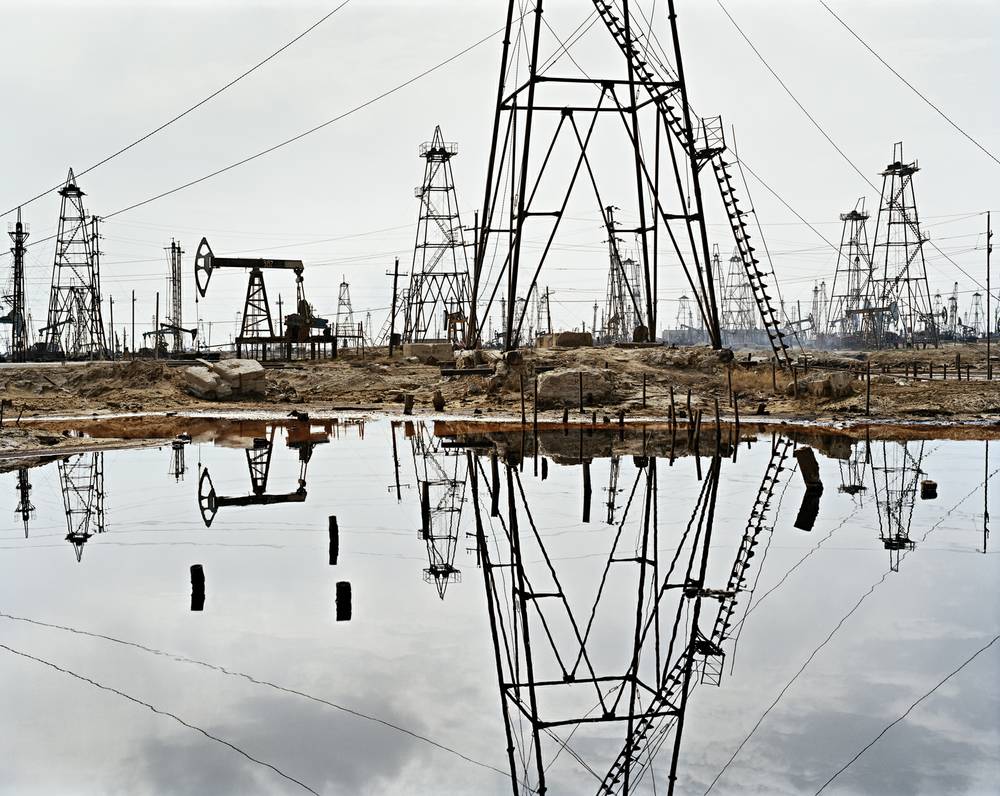
Edward Burtynsky: Oil Through January 14, Monday-Friday, 9 a.m.-5 p.m. (Thursday until 8 p.m.); Saturday, noon-5 p.m.; free. Barrick Museum, 702-895-3381.
Drive right over to see Edward Burtynsky’s Oil at the Barrick Museum. Inside the exhibition, choose your best option: (A) Recoil from the horror; (B) Surrender to sensational beauty; (C) Erect safety barriers; (D) Accelerate into the cognitive fog; or (E) All of the above.
Drawn from the Carol Franc Buck Landscape Photography Collection at the Nevada Museum of Art in Reno, the 41 large-scale color photographs document the extraction, production, distribution and use of our most exploited resource. Oil goes where no lens has gone before—from the inner sanctums of Canadian refineries to the shipbreaking beaches of Bangladesh, from the festive Truckers’ Jamboree in Iowa to the suffocating monotony of Las Vegas’ own suburbs.
The magnitude of Burtynsky’s show emerges, in part, in the collision between content—corrosive tailings ponds toxifying the earth, children ankle-deep in crude—and form. These realistic photographs are so painterly that “Shipbreaking #2” looks, from a distance, like a Robert Motherwell abstraction. Up close, “SOCAR Oil Fields #3” is seemingly full of Cy Twombly scribbles. “Oil Refineries #3” veers into M. C. Escher fantasy, while “Oil Fields #10” nods at British seascape painter, J. M. W. Turner. The tension between documenting the oil industry and delivering fine art gives these works sneaky depth and resonance. You don’t want to look at the rusty tanker hull leaching poison. But you do. You don’t want to love the color, light and shapes discharged by corrosion and toxicity, but you do.
Pattern is the chief fuel behind Burtynsky’s visual density. Put this artist in front of any repeated form—pipes, highways, drills, cars, scrapyard junk—and he’ll perform his own extraction, pumping up hidden aesthetic values. In the diptych “Oxford Tire Pile #9a,” for example, a rubber landscape of several million discarded tires mimics a mountain panorama, only it’s junked Dunlop and Goodyear instead of budding oak and pine. In “VW Lot #1,” tens of thousands of orderly parked cars impersonate an agricultural field seen from the air. It’s not corn down there—it’s a fleet of VWs so monstrous it seems impossible someone could get into each vehicle and drive away.
Cars, drills, tankers, motorcycles, planes—Oil has a lot of horsepower at one end and environmental collapse at the other. In revealing the sublime in the grotesque, Burtynsky aestheticizes an unsustainable industry and an unsustainable way of life. If the goal of art is to provoke thought, Oil hits on every cylinder.






